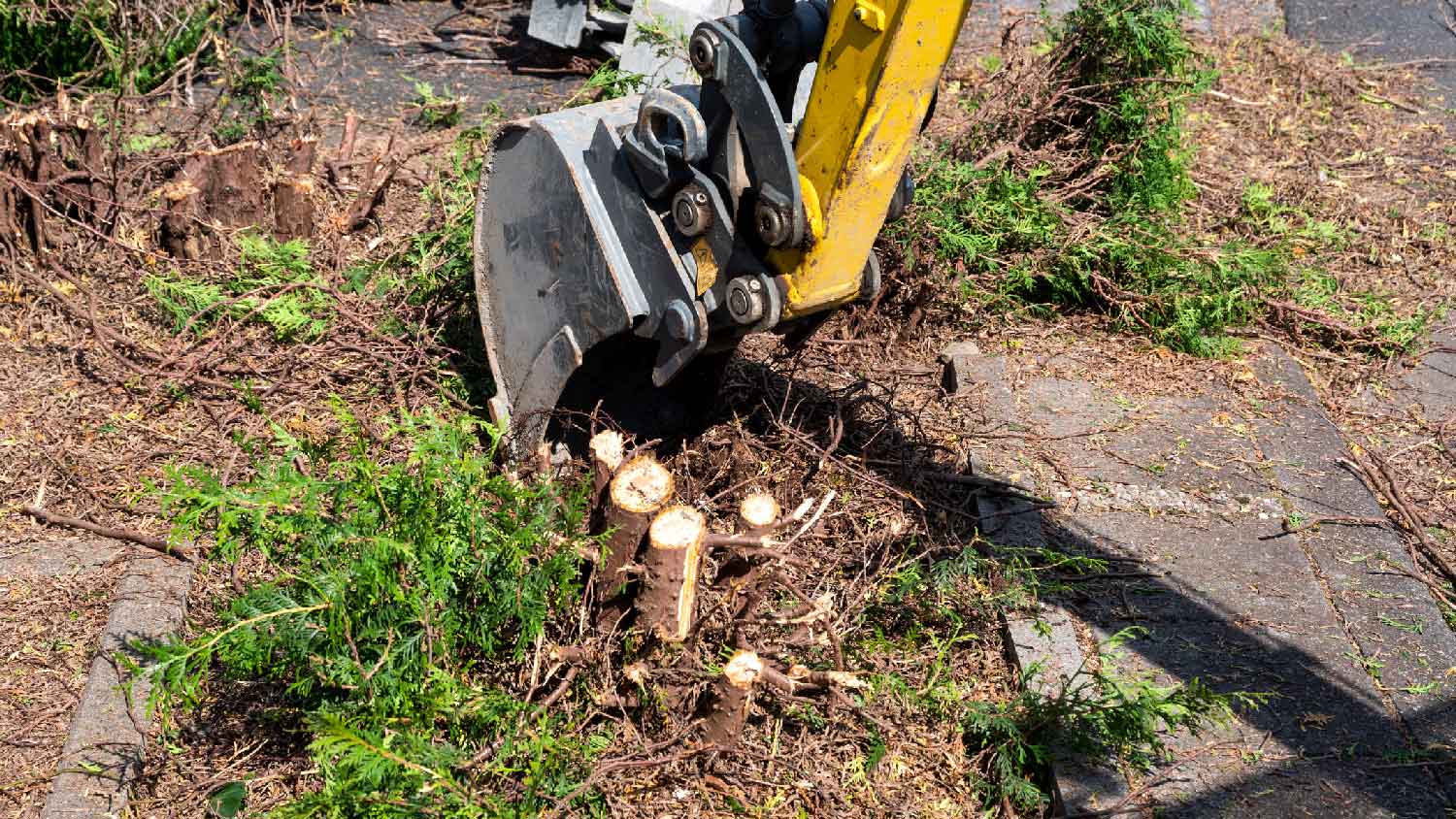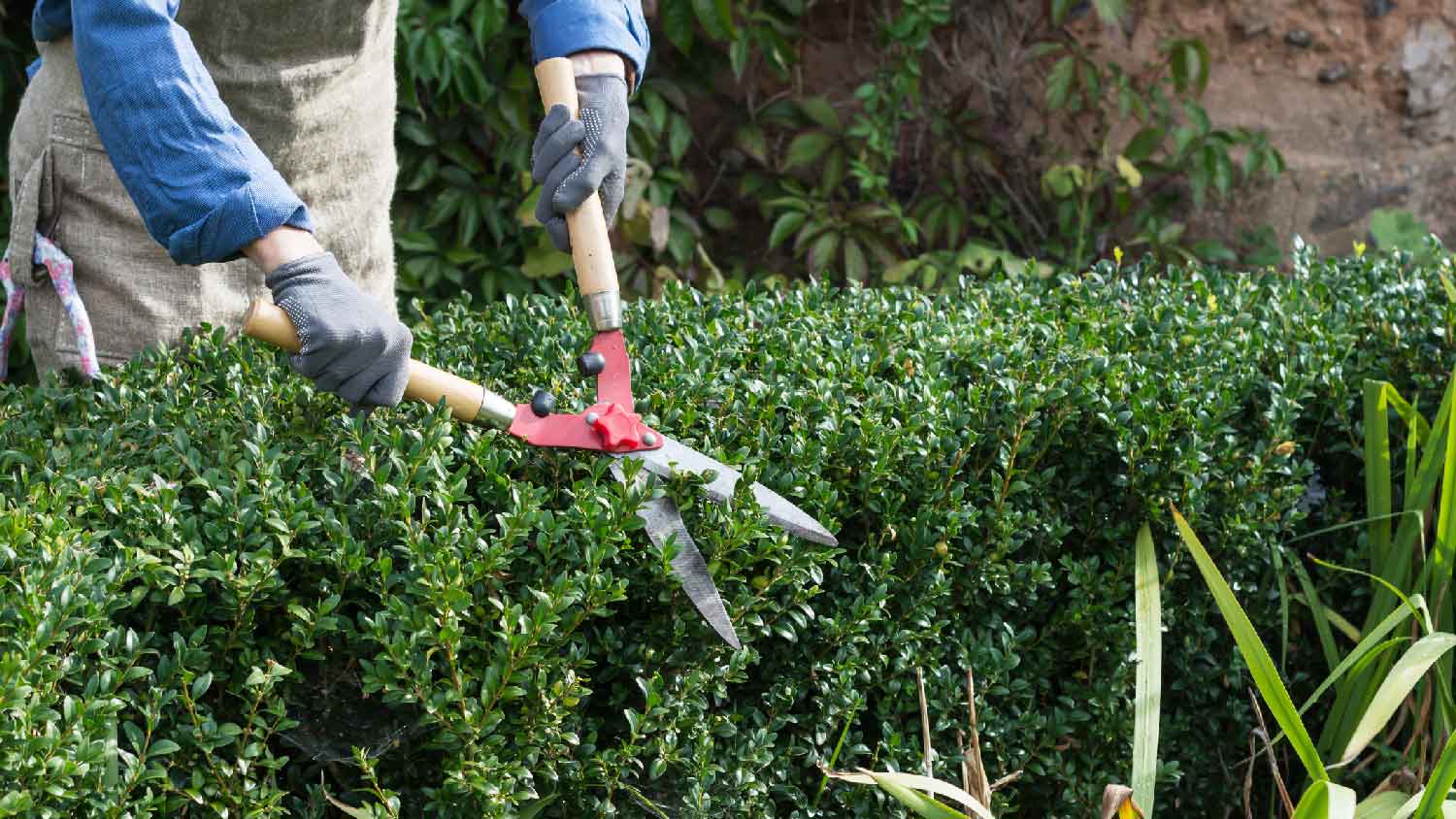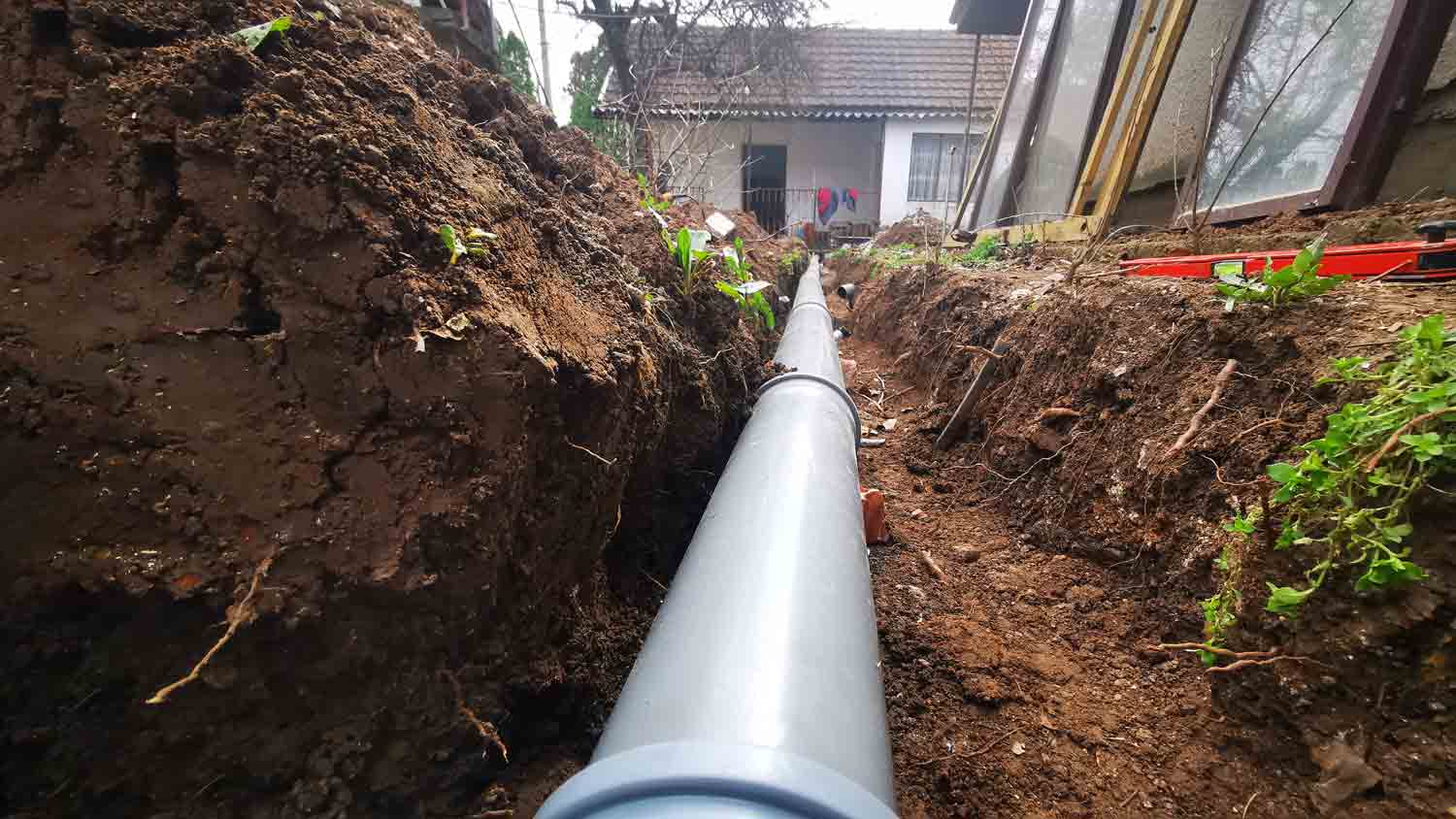
Leveling your yard can help with drainage and prevent damage to your home. Learn the cost to level a yard in Columbus, OH, and what factors can affect the price.
Make room for new landscaping ideas


Learning how to remove hedges means combining brute force with patience and delicate maneuvering. Several reasons may exist to remove an existing privet hedge, or another type of hedgerow, or bushes. Diseased hedges often require removal if they're not salvageable, and ones in the way of a new landscaping design likely have to go as well. Here are three ways to complete the task safely and effectively.
Like intentionally killing a tree for its removal, removing a hedge can be surprisingly challenging. Hedges can take many years to mature, giving them ample time to develop large, complex, and intertwining root systems.
Removing a hedge requires cutting it down and getting the most roots out as possible. Roots that remain in the ground often send up new growth or may harbor diseases that could infect new plants in the location.
Since hedges are common around property perimeters and in highly visible yard areas, running into underground utility challenges when removing hedges happens often and can add to the difficulty level. Additionally, getting large landscaping equipment into areas where hedges are common can be virtually impossible—turning what could be a simple mechanized digging job into an intensive manual labor saga.

There are three basic methods for hedge removal. Choosing a method, or combination of methods, depends on the hedge's surroundings. Using machinery is the fastest and easiest way. However, it's often not an option due to potential damage to surrounding features and building components.
One note: Before digging a hole to remove the hedge and its roots, call 811 a week or two in advance to allow time for an underground utility survey. It's the law to conduct this type of survey, even if you know where your utilities are in your yard. More importantly, it'll help keep you safe and avoid the potential problem of having to fix a preventable accident.
Regardless of the method your hedge requires for its removal, dress accordingly with safety glasses, proper heavy-duty workwear, and sturdy work gloves. While hedges may look delicate, getting them out of the ground can be anything but. It's a much different task than simply trimming your hedges down to the ground. If you opt to use herbicide chemicals, cover nearby plants and your skin to avoid unintentional exposure to either.
Follow these steps for manual hedge removal.
Start by trimming back the branches all the way around the tree using shears or a chainsaw. Once you have the center stem exposed, you can cut that down to a manageable height.
Start digging a trench around the base of a stump or group of stumps, at least a foot deep, before digging under the root ball. Use your loppers to help cut roots if necessary.
With the foliage removed, dig all the way around the base of the hedge with a shovel or spade. Then, you can use the shovel or spade to dig under the root structure, slowly prying it loose from the dirt until it's removed.
Rental centers typically offer mechanical digging equipment and stump grinders in various sizes. If it's possible to use heavy machinery without damaging surrounding plants and infrastructure, it's worth considering to minimize manual digging.
Protect soft ground with plywood or boards under heavy machinery wheels, and only use this type of equipment if you have experience with it.
Use a digger to pull or dig hedges out one at a time, or manually cut back the hedges and grind the stumps and large roots away with a stump grinder.
Tip: You’ll likely have a lot of leftover wood. Many opt to use wood chips as compost if the hedge is healthy.
Brush-killer herbicides are available in multiple forms and are effective for hedge removal. These are potent herbicides, though. Caution is necessary to avoid unintentional damage to nearby plants and animals. However, it may be the best solution for removing hedges in difficult situations where digging by hand or machine is impossible.
Depending on the herbicide, apply the chemical directly on the hedge leaves or trim the plant to its stumps and apply it to kill the roots.
After several days or weeks, the hedges will die, and you can begin removing them by hand. The longer you can wait to remove them, the easier it will be due to continued rotting and withering.

It’s not a secret that hedge removal can be difficult. Use the following tips to make the job as easy as possible.
Avoid injury by dressing appropriately. Heavy-duty clothing can minimize minor and more severe injuries.
Wait for a cool day or time of day to perform the task. Reduce the risk of overworking yourself in the heat by avoiding digging during the hottest time of the day.
Be patient and stop to inspect your progress often. Hedge root systems can be complex and tangled. Stopping frequently to figure out which root to cut or which way to pull or pry can speed up the project by working smarter instead of harder.
We don’t recommend chaining your automobile bumper to a stump or root ball to try to extract it, which often results in dangerous consequences.
Removing hedges is hard work. To preserve your personal safety and the integrity of your yard, we recommend hiring a local landscaping company to tackle this task. The national average cost to remove shrubs and hedges is around $900 or about $100 for every five feet of hedge length. Your local landscaping company can often perform the task in a matter of hours instead of what could be days to do it yourself. And, while doing the job yourself often comes with a sense of satisfaction, having a professional do it is safer and easier on your body and your free time.
We had a 20+ year old landscape lighting system that needed replacement. Midwest Lightscapes worked with us to design a much improved lighting system, lighting the exterior of the house and the back yard. Installation of the 45 light system took one and one-half days, and went very smoothly....
Phil and his team did a great job. He listened to our needs and took care of everything. The team was polite and answered our questions along the way. They were flexible to last-minute requests. Our new patio looks beautiful. I would use Garden of Eden Landscaping again, and highly recommend...
Norman responded to the voicemail that I left describing the situation within an hour of having left it. He was already on a job in our area and offered to come over the same day to assess the situation and give an estimate. Once he saw what we needed we set up a time 3 days later for him and...
They have been great to work with. Luke Henry, the Proscape owner is always accessible and responsive to our needs. He has met us at our property several times to discuss ideas to improve our landscape. His crews show up as planned and we are very pleased with their work. We will continue our...
From start to finish this company amazed us. After three long years of quote after quote we found who we were looking for right around the corner from us. We had a detached 2 car garage that was going unused becuase the driveway that had been there when the house was built in 1959 had long...
All around they have done a really great job. I have used JL Landscapes for the past 8 years. I own and operate my own commercial/residential real estate company where we own, operate, and maintain our own properties. JL Landscapes has been our exclusive landscaper for both our business...
I contacted a handful of highly-rated companies on Angie's List in order to buy a half cord of firewood. I called all of them on a Saturday, expecting to hear from no one until Monday. Surprisingly, Adam at Frazier's Landscaping got back to me within an hour and offered to deliver the...
Herb Techmer did not finish what was agreed in the invoice. The work actually completed was done well, however, the entire agreement in the invoice was not honored. The following Saturday, Mr. Techmer stated he would return to finish the work. However, Herb Techmer never arrived and...
Chris has worked on projects to us to ten years. It always goes well. Price is always good, work is always professional and looks great. We get so many compliments on our patio. In saying "patio" we really mean a large area that combines stonework and landscaping, a beautiful area for...
From average costs to expert advice, get all the answers you need to get your job done.

Leveling your yard can help with drainage and prevent damage to your home. Learn the cost to level a yard in Columbus, OH, and what factors can affect the price.

Landscape curbing can really improve the look of a yard, but at what cost? Find out how much it costs and the different ways you can do it

Looking to step up your golf game without leaving your property? This guide details backyard putting green costs to help you decide if this project is worth it.

Learn how to hire a forestry mulcher and land-clearing service with these quick and easy tips. Brush clearing has never been easier.

Try these 10 backyard improvements to turn your backyard into your own personal oasis.

Keep your yard from flooding by choosing the right piping and drainage. Learn what type of piping is used for the drainage system in a yard with this guide.